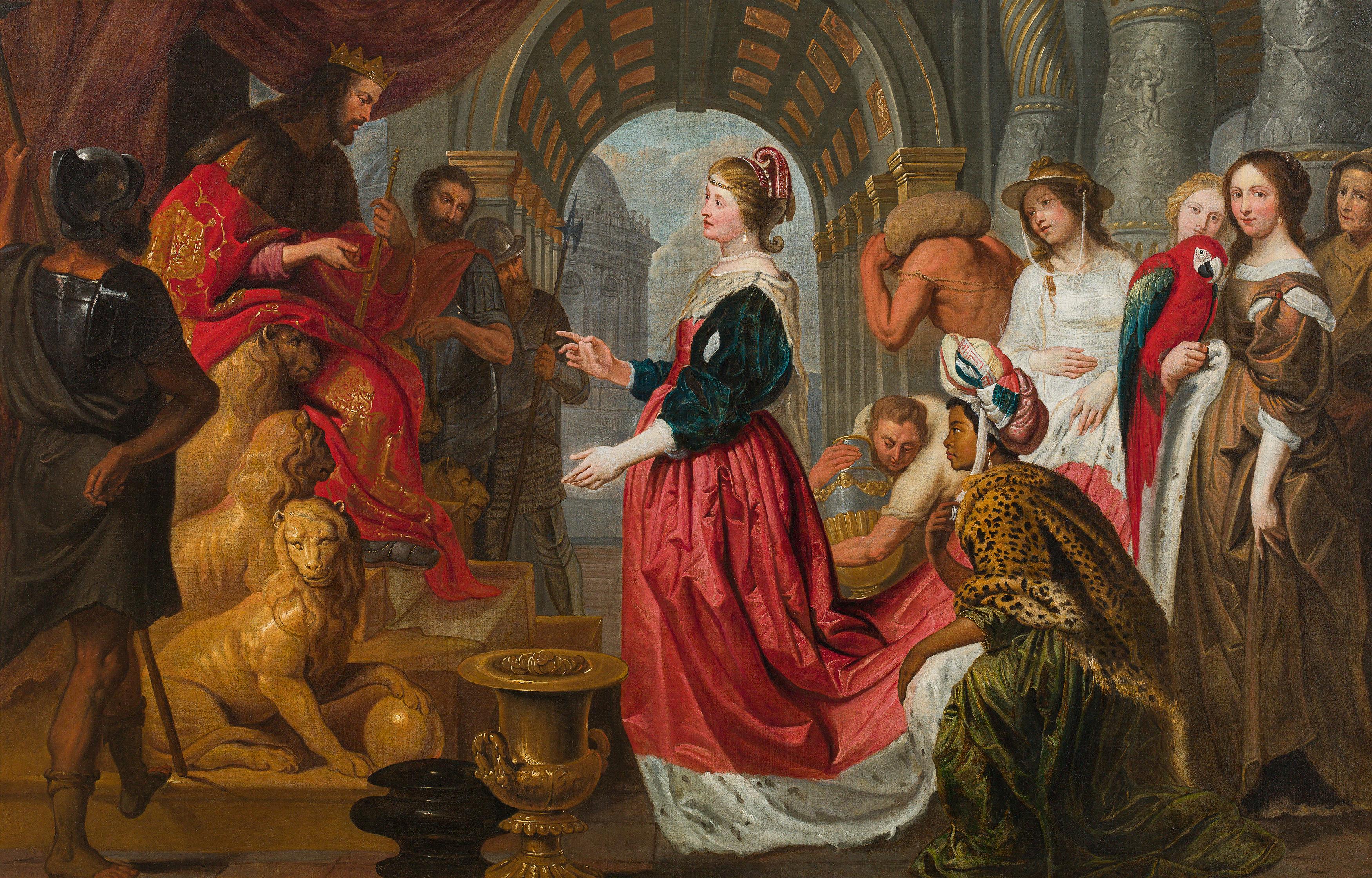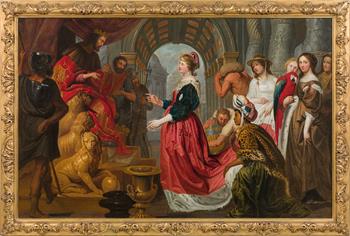1049
„Solomon and the Queen of Sheba“
oil on canvas; framed
105,5 × 163 cm
Provenance
private collection, Austria;
auction Auktionshaus im Kinsky, Vienna, 26 April 2017, lot 451;
private property, Austria
We are grateful to Dr. Hans Vlieghe for his suggestion on the attribution of the painting to Erasmus Quellinus the Younger (based on professional photographs).
Estimate: € 15.000 - 30.000
Hammer price: € 21.000
Auction is closed.
Erasmus Quellinus the Younger was one of the leading Flemish history painters following in the footsteps of Peter Paul Rubens. He came from a distinguished Antwerp family of sculptors and artists. Around 1633/1634 he was accepted as a master in the Antwerp Guild of St Luke and from 1634 was active in the workshop of Peter Paul Rubens, becoming his closest collaborator. After Rubens' death in 1640, he was appointed his successor as city painter of Antwerp. As a result, he transformed Rubens' baroque conception of art into a more classicistic style of painting. This reorientation is well documented in one of his most important decoration projects, the Palais op de Dam in Amsterdam, which he decorated around 1656 together with his brother Artus Quellinus. His extensive oeuvre mainly comprises altarpieces in Antwerp and other Flemish cities. Quellinus also worked as an engraver, took over the artistic direction of the Plantin printing house from Rubens and provided designs for tapestries. Like Rubens, the versatile artist, who also studied philosophy, had an extensive knowledge of cultural history.
The story of the encounter between Solomon and the Queen of Sheba from the First Book of Kings in the Old Testament was painted by Quellinus around 1650 in three known but identical versions in different sizes. One is in the possession of the Lichtenstein Collection in Vaduz (150 x 238 cm), another in the Staatliche Gemäldesammlung in Kassel (99 x 137 cm) (cf. De Bruyn, Jean-Pierre: Erasmus II Quellinus (1607-1678). De Schilderijen met Catalogue Raisonné. Freren 1988, pp. 203f.). In the present painting, however, the painter attempted a new compositional solution that captures the action more closely and pushes the architecture into the background. The centre of the painting is occupied by the Queen of Sheba in a magnificent ermine-lined dress. The scene is depicted in which the queen, standing confidently, wants to test the king with riddles. The king sits in the shade of the canopy on his magnificent throne adorned with three golden lions. In a similarly eloquent gesture of the hands and in direct eye contact with the queen, Solomon knows the answer to everything. His servants and the queen's entourage follow the conversation with interest. Among the sumptuously dressed women, however, only the kneeling black servant dressed in a leopard skin cloak hints at the queen's actual origins in what is now Yemen. Precious vases and vessels in gold symbolise the rich gifts that the queen presented to Solomon at the end of her visit out of reverence for his wisdom.
The painting is particularly notable for its harmonious colour composition, which is held in a subdued light and corresponds to the serious and calm atmosphere of the subject. As an excellent figure painter, Quellinus knows how to model the figures spatially and to stage them effectively on the palace stage.


